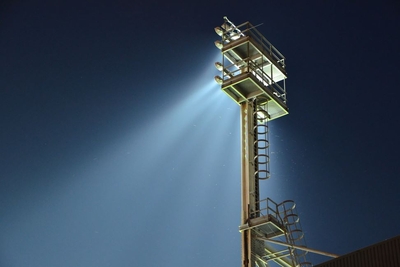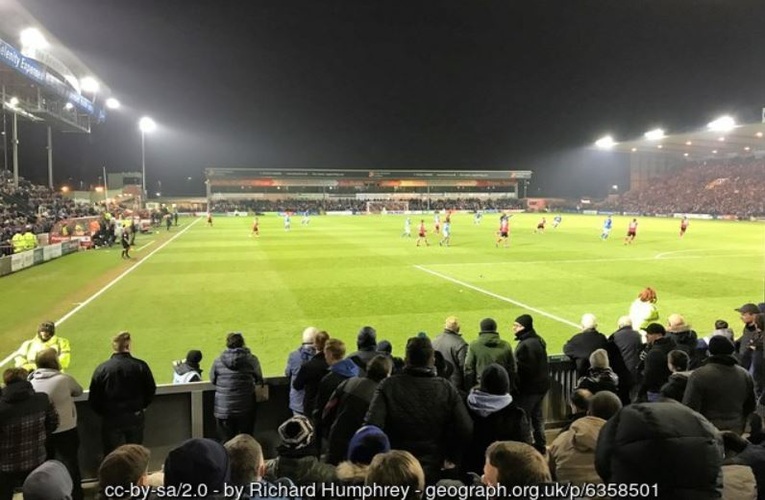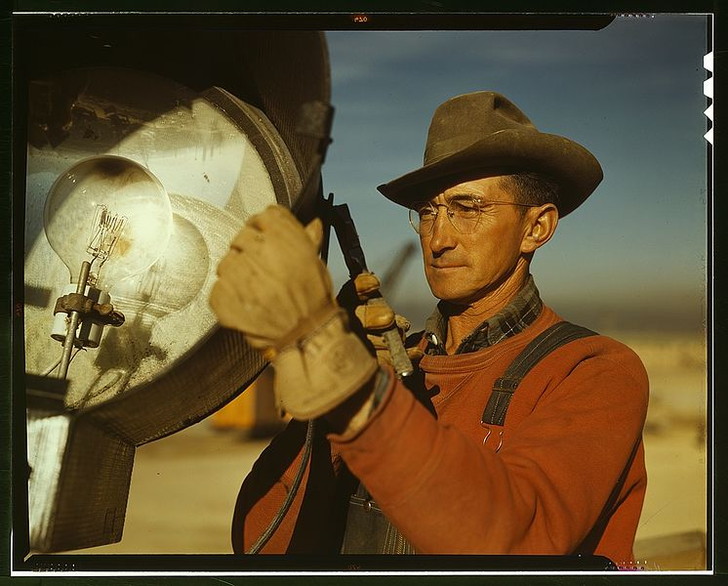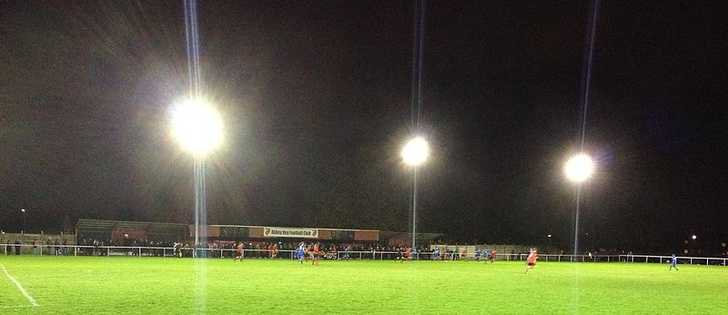
Nowadays, with games kicking off on Wednesday nights, Friday evenings and late winter afternoons, we take the use of floodlights for granted.
We’re used to be able to watch football whenever we want and neither our football clubs nor the Football Association are bothered about helping fans get home after the games, so night time kick-offs are common practice.
But where did the floodlight come from as an idea? Where were they first used? And when?
We’ll have a look at the surprisingly interesting world of football under the floodlights.
Stick with us as we put floodlights under the spotlight.
Floodlights Explained

Simply put, floodlights are a device that allow pitches or large areas to be flooded with light. In the modern era we are used to seeing them have broad beams and a high intensity, with several huge lightbulbs strung together in order to light up a pitch so that we can watch a football game at night.
Of course the original floodlights weren’t quite as powerful as all that. Go and see a game of football or tennis played tonight and you’ll barely notice any difference from how the match would look in the day time. You can sit right at the back of a huge stand and still be able to make out every detail of the players on the pitch in front of you.
Back in the days of the first floodlit game, however, things were a bit different. Ever since Thomas Edison invented the lightbulb they have been used to illuminate the dark, but they weren’t significantly better than grouping a load of large candles together. Playing in the dark was a new and exciting thing, but it lacked the clarity that sport enjoys from modern day floodlights.
Today most floodlights use a metal-halide lamp that emits a bright, intense lights of around 75 to 100 lumens/Watt. Sodium-Vapour lamps can be used, too, as they are quite cost effective because they have a high lumen-to-Watt ratio, normally about 80 to 140 lumens/Watt. The development of LED technology means that this is becoming a more common technology used in floodlights too. Taunton Vale Sports Club used LED-based floodlight for a match on 24th of March 2014, with other clubs expected to follow suit in the future.
The First Floodlights

The first sport to ever use floodlights was polo. On the 18th of July 1878 a game was played in Fulham between Ranelagh Polo Club and the Hurlingham Club and the new technology helped the two clubs to see out their match into the evening. Other sports weren’t exactly quick to follow suit, with Australian Rules Football being the next to use floodlights more than seventy years later. On the 16th of June 1952 floodlights were used in a game between Essendon Football Club and Geelong Football Club at the Brisbane Exhibition Ground.
Later that same year cricket decided to get in on the act, with a match played under floodlights in England’s oldest sport for the first time on the 11th of August 1952. Millions of people watched the new night game on their own burgeoning new technology: televisions. Incidentally, cricket floodlights are slightly different to other sports as they stand on huge poles that go quite high in the sky. This is because batsmen tend to hit the ball high and lights have been smashed in the past, plus the higher lights allow the ball to stay in sight for longer for the fielders.
Association Football has always been a bit different, of course, and whilst cricket and Australian Rules Football both took their time to catch up, English football was straight onto using the technology at the same time as polo. An experimental game was played under floodlights at Bramall Lane in Sheffield in 1878. The lights were powered by batteries and dynamos as the famous old club attempted to use the technology to brighten up a gloomy winter afternoon in South Yorkshire.
Floodlights In Common Use

In the top-tier of Association Football, as well as in many of the lower tiers of the Football League, floodlights are a requirement at stadiums hoping to host professional football. The installation of permanent floodlights has therefore become common practice, with only a few clubs still using temporary ones are a useful alternative.
It took a while for that to be the case, however. During the 1930s Herbert Chapman at Arsenal decided to install permanent lights at Highbury. The Football League, in its infinite wisdom, refused to sanction their use, though, so only friendly and unofficial games were played using the newly installed lights.
It took until the 1950s for the FA to change its mind. Even then it wasn’t because the powers that be realised how useful the technology would be, but rather they were being used so commonly in friendly games that they realised they had no choice but to relent. In 1949 Holly Park, home of South Liverpool Football Club, became the first ground to host a match in England under ‘permanent’ floodlights when they played a friendly against a Nigerian XI.
In 1950 The Dell, where Southampton then played their games, became the first ground to have floodlighting installed permanently in England. On the 31st of October 1950 they played their first game there, welcoming Bournemouth & Boscombe Athletic to the ground for a friendly. The first ‘official’ game played under floodlights took place when a Football Combination XI played Tottenham Hotspur on the first of October 1951.
The first international game to be played under floodlights was England v Spain on the 30th of September 1955, with England winning the match at Wembley by four goals to one. On the 22nd of February 1956 Portsmouth played Newcastle in a game at Fratton Park under floodlights, with the match becoming the first official Football League game to be played with the now ever popular technology aiding the players’ performances and the supporters’ enjoyment.
